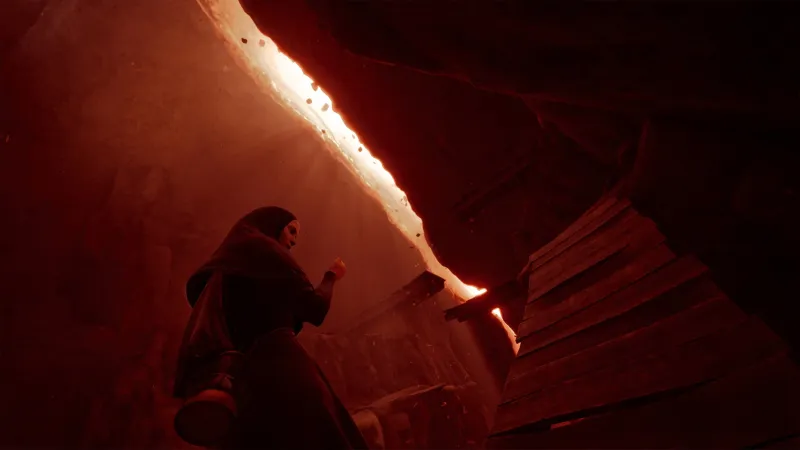Indika is bizarre, surprising, and captivating. It made me question its reality almost as often as its titular protagonist, a young nun tormented by the Devil, doubts her faith. This odd adventure from its aptly named developer Odd Meter may lack some design polish, but the fascinating tale at its core instilled enough faith in me to see it through to the end.
The game unfolds in early 19th-century Russia. Indika is treated as an outcast at her monastery, and, for some reason, she’s regularly taunted by the voice of Satan himself. The story doesn’t delve into how this sacrilegious relationship began, and that’s fine. The Devil is more of a storytelling device; a symbol of Indika’s desire to be a good person, contrasted by her growing skepticism and pragmatism in the church’s rigid viewpoints on morality and sin. This conflict comes to a head when Indika finds herself in an unlikely partnership with Ilya, an escaped prisoner with his own strong religious beliefs.
As the pair bond over seeking a divine cure for their respective ailments – Indika’s demonic presence and IIya’s wounded arm – the third-person adventure sees them trek through locations such as deserted factories and frozen wilds. Along the way, players solve environmental puzzles and, on very rare occasions, evade threats. The obstacles themselves are respectably designed and varied, often centered on Indika inexplicably operating heavy machinery like a lift to move and stack giant cans or manipulating the massive gears of an industrial elevator. Less enjoyable moments, such as fleeing a pursuing wolf in an annoying trial-and-error escape sequence, appear rarely, thankfully.
The gameplay becomes most interesting when the Devil’s influence overwhelms Indika to the point the world around her turns hellish red, and the environment is ripped apart into a distorted version of itself. This leads to relatively simple but thematically interesting navigation puzzles as players switch between this hellscape and reality by hitting a “pray” button to find the proper path. These are neat segments that I wish occurred more often than the small handful of times they do.
Poking around environments leads to hidden collectibles, from religious artifacts to “indecent” publications, that reward points, which manifest as literal giant pixelated gems that appear in front of Indika. This bizarre visual flourish is a wild contrast to the otherwise realistic art direction, and these points level up Indika via a two-pronged skill tree of point modifiers (themed on ideas like Shame, Guilt, and Repentance) that impact the story less literally than it appears.
This is just an example of Indika’s strangeness. Overt video game-y elements such as quirky, chiptune melodies and flashbacks that unfold as playable 16-bit platforming sequences are sprinkled throughout the experience. Whether or not this approach has any thematic significance is unclear (perhaps symbolizing the comparative simplicity of Indika’s childhood), but, at the very least, it gives Indika a surreal and playful charm.
Everything in the game, from the strange people you meet to the weird camera angles to its wild intro cutscene I won’t spoil, gives the game a potent dose of absurdity that oddly works. Indika feels like a black comedy at points, and perhaps that’s the intent. It swings for the fences, and that delightful boldness is combined with poignant commentary about the struggle of maintaining unwavering faith in a harsh, unjust world. Indika’s engaging and, at times, emotional personal journey of self-discovery pulled me to a powerful conclusion that, like most everything else, leaves its interpretation up to the player.
The result is an adventure that feels thoughtfully conceived, humorous, and depressing all at once, as well as “off” in the right ways. Indika is one of the year’s most affecting and memorable adventures, and its themes will stick with me as I continue to ponder their meanings.



